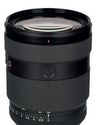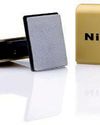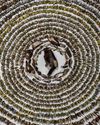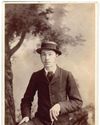
We paid the KGB to be able to go into a prison. It was a lot then. I think about £700 but well worth it. We had a bit of paper and a receipt for the bribe so we could claim it on expenses,' says photographer Barry Lewis. In 1991, he and writer Peter-Matthias Gaede arrived in Moscow on assignment for German GEO magazine. It was the last days of glasnost, a period of openness and transparency in government institutions and activities of the Soviet Union.
They planned to interview and photograph survivors of the Gulag, the system of Soviet labour camps and accompanying detention and transit camps and prisons that housed the political prisoners and criminals. Of the 18 million who were sent to the Gulag from 1930 to 1953, between 1.5 and 1.7 million people perished as a result of their detention.
Founded in Moscow in 1989, the Memorial organisation had begun building up a database of the victims and helped find them survivors.
Moscow was the start of their journey; the destination was Butugychag Corrective Labour Camp, high in the Kolyma mountains.
They discovered the camp (which closed in 1955), marked on the map as agricultural buildings, was in fact a secret uranium mine.
'The idea was we'd follow the path of the original prisoners,' says Barry. 'They were shipped into Magadan and started building a road up to the mines. There were ways up, but it was unexplored. There were some indigenous people, hunters, prospectors. In the 1930s they started building the Road of Bones. They used prisoners and a lot of them died. You couldn't bury them in the permafrost so they'd just put the road over them. We thought we'd follow this 2000km road as far as Butugychag 300km along."
This story is from the {{IssueName}} edition of {{MagazineName}}.
Start your 7-day Magzter GOLD free trial to access thousands of curated premium stories, and 9,000+ magazines and newspapers.
Already a subscriber ? Sign In
This story is from the {{IssueName}} edition of {{MagazineName}}.
Start your 7-day Magzter GOLD free trial to access thousands of curated premium stories, and 9,000+ magazines and newspapers.
Already a subscriber? Sign In

Calling The Shots: A Queer History of Photography
Offering an unprecedented view of photographic history through a queer lens, this is a wonderful and powerful book, says

Large-aperture standard zoom, too
SONY has also revealed a new premium standard zoom, the FE 28-70mm F2 GM.

Super-fast, high-res Sony Alpha Ai II
SONY has announced its new professional full-frame flagship camera, the Alpha A1 II.

39 awesome accessories
Our round-up of the best accessories we've used and reviewed this year, along with some old favourites. There's something here for every budget, starting from just £7, including tripods, bags, filters and much more

Such a thing as society
This autumn sees the launch of a major new book and exhibition devoted to examining the multiplicities of photography during 1980s Britain. Peter Dench finds out more

Join Club
The sociable Canvey Island Photographic Club is keen to grow its in-person meet ups

Capturing flight
Winners and finalists of Bird Photographer of the Year share their tips for success with Hollie Latham Hucker

140 years of change
AP has become the world’s oldest surviving consumer photo magazine because we have moved with the times, says Nigel Atherton

Preserving history in platinum
A deep dive into the meticulous art of platinum printing, and the collaboration between the Royal Geographical Society and Salto Ulbeek. Mike Crawford explores how they brought historical photographs to life with enduring beauty and precision

Life in the past lane
What was life like for an amateur photographer in 1884? John Wade takes a trip back in time